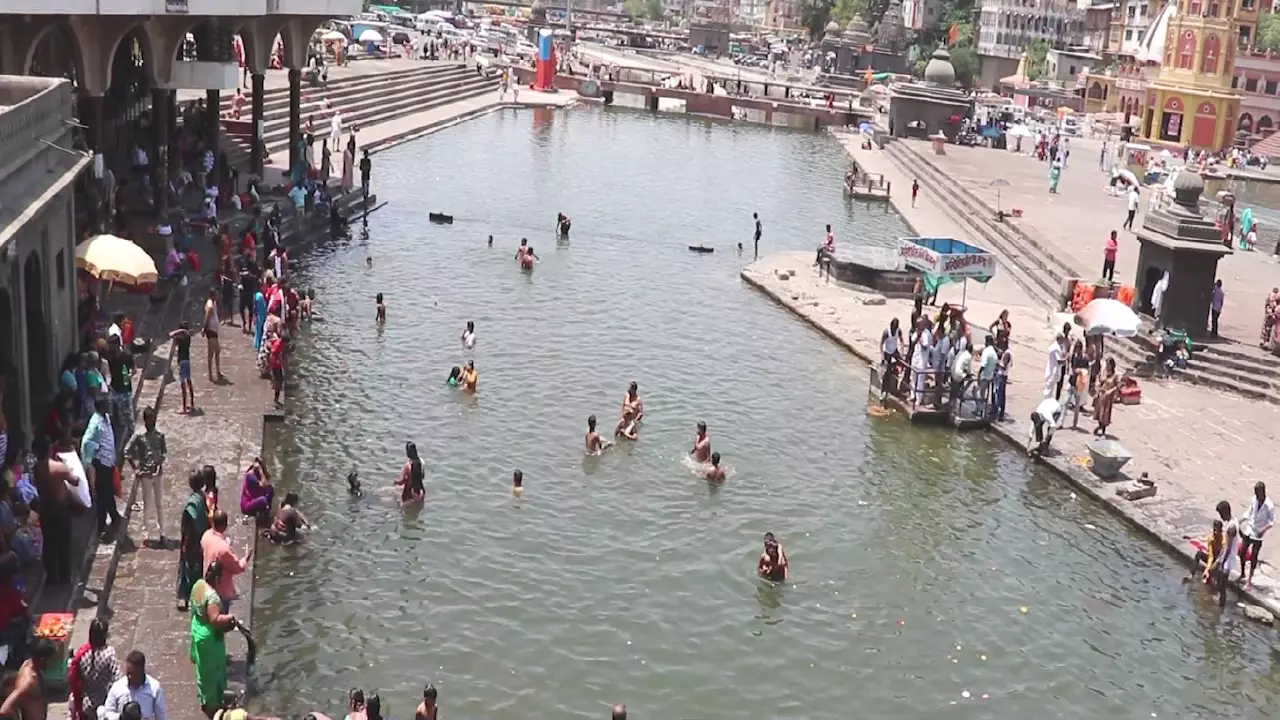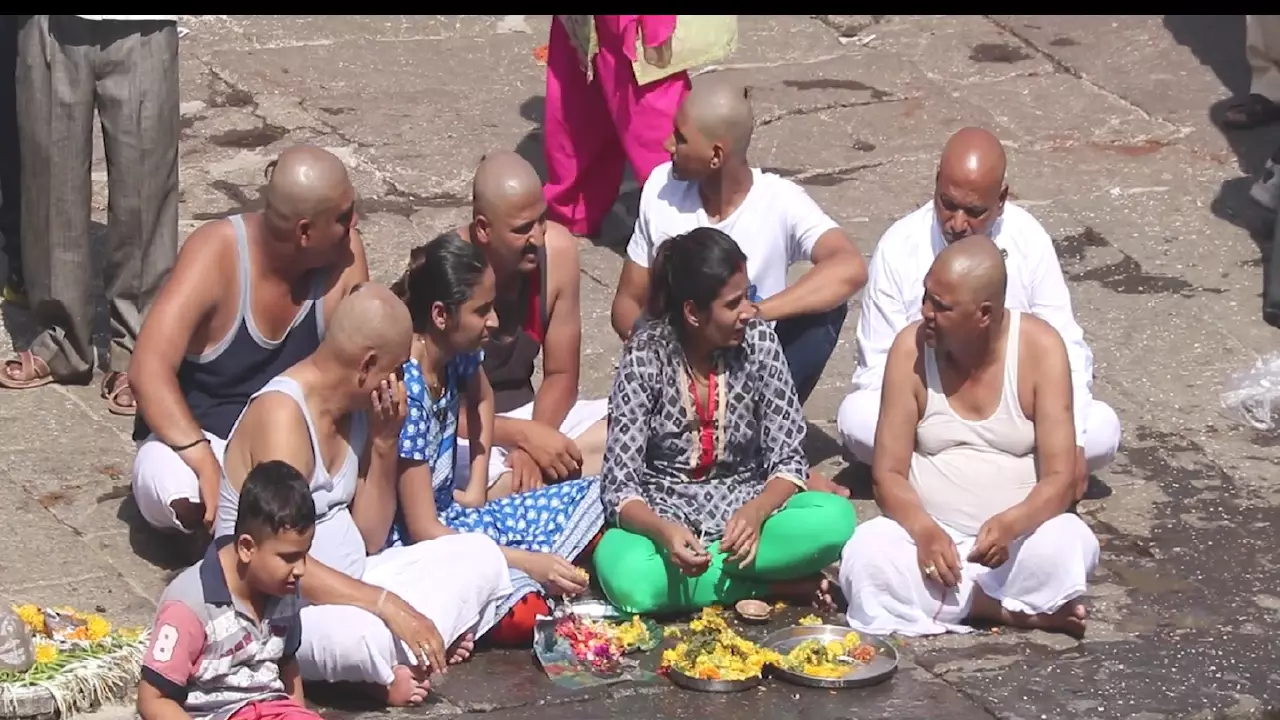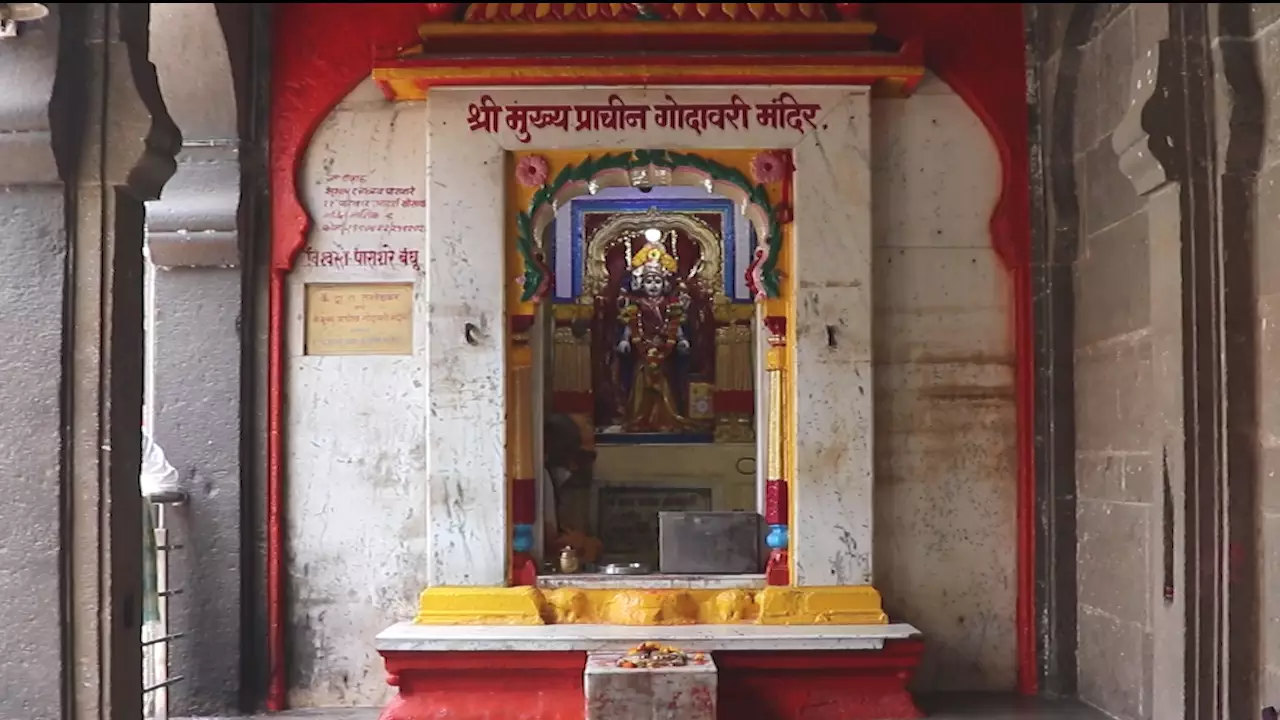Ram Kund, Nashik: The Heart of the Vaishnavite Kumbh Mela
For countless pilgrims and ascetics, this place is far more than a bathing tank—it is a bridge between mortal life and the eternal, where celestial rhythm, mythology, and devotion converge.
The Cosmic Design: Astrological Timing of the Simhastha Parva
Every Kumbh Mela site, from Prayag to Haridwar, follows a sacred calendar set by the movement of planets. The celebration in Nashik, known as Simhastha Kumbh, is guided by the same cosmic law. It takes place when the mighty planet Jupiter (Brihaspati) and the radiant Sun (Surya) enter the zodiac sign of Leo (Simha Rashi). This moment, described in Jyotish Shastra (Vedic Astrology), happens only once every twelve years.
During this alignment, the Godavari River is believed to become spiritually charged with Amrita, the divine nectar of immortality that once spilled during the great Samudra Manthan (churning of the ocean). For devotees, a sacred dip in Ram Kund during this celestial conjunction is said to cleanse lifetimes of karma and pave the path toward Moksha—liberation from the endless cycle of birth and death.
Sacred Mythology: The Footsteps of Lord Rama in Nashik
The holiness of Ram Kund goes far beyond astrology—it rests upon the living memory of the Ramayana. Nashik has always been a city blessed by the presence of Lord Rama, the embodiment of dharma and compassion.
Lord Rama’s Connection to Ram Kund
It is believed that during his exile, Shri Rama made Nashik his home, living along the river Godavari with Mata Sita and Lakshmana. It was here, according to legend, that Lord Rama took his first bath in the sacred river, sanctifying the spot forever. This sacred reservoir later became known as Ram Kund, and from that divine moment, its waters were regarded as spiritually purifying for all.
To this day, millions of devotees believe that bathing here not only absolves personal sins but also ensures the salvation of one’s ancestors. In Vaishnavite traditions, Ram Kund stands as a living manifestation of Lord Rama’s presence on earth—a place where divinity once walked and humanity continues to seek grace.

The Order of Devotion: Ram Kund and the Vaishnavite Akharas
Among the twelve monastic Akharas of the Kumbh Mela, several belong to the Vaishnavite tradition—followers of Lord Vishnu, the sustainer of the universe. For these Akharas, Ram Kund is not just a site of ritual; it is their sanctified home within the Mela.
The Vaishnavite Akharas
Three principal Vaishnavite Akharas—Shri Digambar Akhara, Shri Nirvani Akhara, and Shri Nirmohi Akhara—hold their royal processions and sacred immersions here. Their centuries-old customs are rooted in devotion to Lord Vishnu’s avatars, primarily Lord Rama and Krishna. For the saints of these Akharas, immersion in Ram Kund represents surrender to God, purification of soul, and reaffirmation of their spiritual vows.
Historical Division of Sacred Sites
The 19th century marked a crucial chapter in the history of Nashik’s Kumbh Mela. Once, there was conflict between Shaivite and Vaishnavite monastic groups over the order of bathing—especially between the Shaivite Naga Sannyasis and the Vaishnavite Vairagis. The dispute reached a tragic peak at Tryambakeshwar. To prevent future unrest, the British administration divided the bathing responsibilities:
-
Shaivites were allotted the Kushavarta Tirtha at Tryambakeshwar.
-
Vaishnavites were given Ram Kund in Nashik.
From that time onward, Ram Kund has been the dedicated site for all Vaishnavite Akharas during the Kumbh Mela, securing its title as the “Heart of the Vaishnavite Kumbh.”
The Shahi Snan at Ram Kund: The Royal Bathing Ceremonies
When the celestial moment arrives, Ram Kund transforms into a sea of saffron, chants, and radiant faith. The Shahi Snan (Royal Bath) here is the pinnacle of Vaishnavite participation in the Simhastha Kumbh.
The Royal Procession (Peshwai)
Before dawn, the Akharas begin their grand processional march toward Ram Kund. Ascetics draped in saffron robes carry flags, conch shells, and ceremonial umbrellas. The revered Mahamandaleshwars ride upon decorated elephants and horses, moving with solemn dignity. The atmosphere fills with devotional chants of Ram Naam Satya Hai and Jai Shree Ram. As the sacred sound echoes across the ghats, pilgrims line the path, bowing in reverence as spiritual history unfolds before their eyes.
The Sacred Immersion
When the first group of Vaishnavite saints steps into Ram Kund, the moment feels beyond time. Their holy dip marks the climax of the event. For the lay pilgrims who follow after, the water carries divine vibrations left by the saints’ prayers and penance. Bathing here on a Shahi Snan day is believed to multiply the merit of one’s actions a thousandfold, bringing both worldly peace and ultimate liberation.
The sight of these radiant ascetics offering prayers, some lost in trance and others weeping with devotion, is among the most powerful visions one can witness in the entire Kumbh Mela.
Ritual Life Around Ram Kund During the Mela
Beyond the Shahi Snan, Ram Kund becomes a living city of faith for the duration of the Kumbh. The atmosphere hums with hymns, discourses, and devotional music. Saints sit under canopies, teaching the theology of Bhakti—the path of love and surrender to God.
Pilgrims perform:
-
Tarpana and Pinda Daan: To offer gratitude to ancestors.
-
Deep Daan (Lamp Offerings): At twilight, thousands of diyas float across the waters like stars on the river.
-
Ram Katha and Kirtan: Recitations of the Ramayana fill the night air, ensuring that the story of righteousness echoes across the ages.
For Kalpavasis—pilgrims who stay for the entire month—Ram Kund serves as their spiritual anchor, where each dawn brings another opportunity for reflection, surrender, and self-discipline.

The Living Soul of Nashik’s Faith
To stand at Ram Kund during Simhastha is to witness living history. The water reflects not only the lamps and faces of devotees but also the memory of Lord Rama himself. The chanting of saints, the ringing of temple bells, and the scent of incense create an atmosphere where the sacred and worldly merge effortlessly.
Here, every drop of the Godavari carries stories—of saints who renounced, kings who sought redemption, and pilgrims who dissolved their sorrows in faith. For the Vaishnavite soul, bathing in Ram Kund is the highest form of worship, a pilgrimage within the pilgrimage

